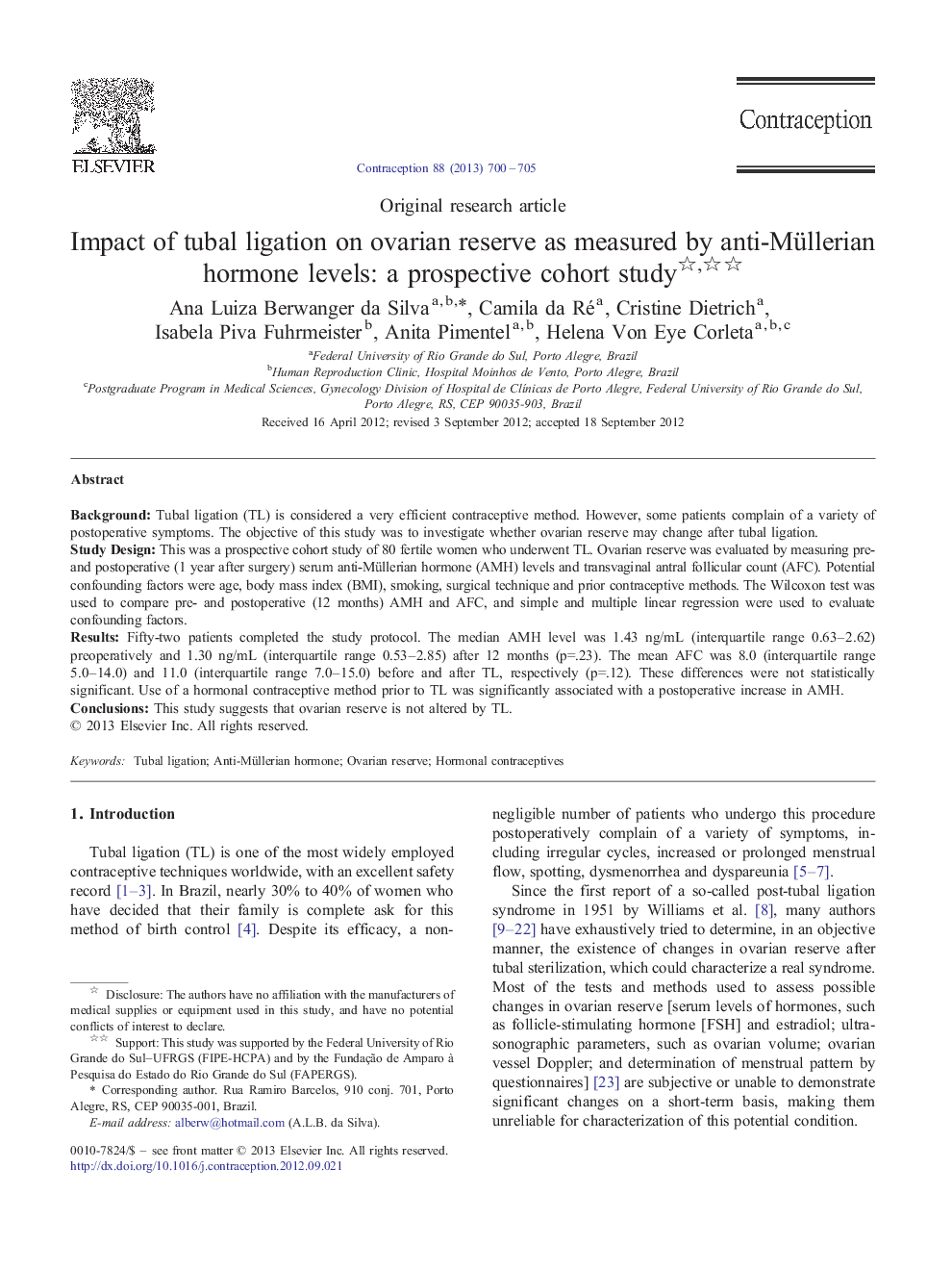| Article ID | Journal | Published Year | Pages | File Type |
|---|---|---|---|---|
| 3913610 | Contraception | 2013 | 6 Pages |
BackgroundTubal ligation (TL) is considered a very efficient contraceptive method. However, some patients complain of a variety of postoperative symptoms. The objective of this study was to investigate whether ovarian reserve may change after tubal ligation.Study DesignThis was a prospective cohort study of 80 fertile women who underwent TL. Ovarian reserve was evaluated by measuring pre- and postoperative (1 year after surgery) serum anti-Müllerian hormone (AMH) levels and transvaginal antral follicular count (AFC). Potential confounding factors were age, body mass index (BMI), smoking, surgical technique and prior contraceptive methods. The Wilcoxon test was used to compare pre- and postoperative (12 months) AMH and AFC, and simple and multiple linear regression were used to evaluate confounding factors.ResultsFifty-two patients completed the study protocol. The median AMH level was 1.43 ng/mL (interquartile range 0.63–2.62) preoperatively and 1.30 ng/mL (interquartile range 0.53–2.85) after 12 months (p=.23). The mean AFC was 8.0 (interquartile range 5.0–14.0) and 11.0 (interquartile range 7.0–15.0) before and after TL, respectively (p=.12). These differences were not statistically significant. Use of a hormonal contraceptive method prior to TL was significantly associated with a postoperative increase in AMH.ConclusionsThis study suggests that ovarian reserve is not altered by TL.
